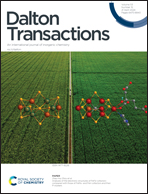Cationic charge effect of glutamine repulsion adsorbate on Li metal surfaces for highly stable lithium–sulfur batteries†
Abstract
Lithium–sulfur batteries (LSBs) are superior next-generation batteries compared to commercial lithium-ion batteries (LiBs) because of their gravimetric energy densities, which provide longer battery life in a lighter package. However, the biggest hurdle for commercializing LSBs is their poor long-term cycling performance, which stems from polysulfide shuttling. To address this issue, we propose a novel approach: the use of glutamine, an amino acid, as an electrolyte additive to increase the cycling stability. Due to its molecular structure containing amines, the formation of Li dendrites was obstructed by homogenizing the Li-ion flux to shield the exceedingly active Li surfaces with glutamine, thereby reducing the overvoltage during Li plating and stripping. Additionally, the redox reactions of lithium polysulfides were enhanced, which helped to alleviate the shuttling of lithium polysulfides. Therefore, the addition of glutamine improved the stability and reduced the cell degradation rate by approximately 0.066% during high C-rate long-term cycling tests.



 Please wait while we load your content...
Please wait while we load your content...